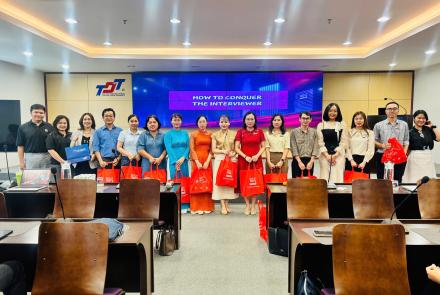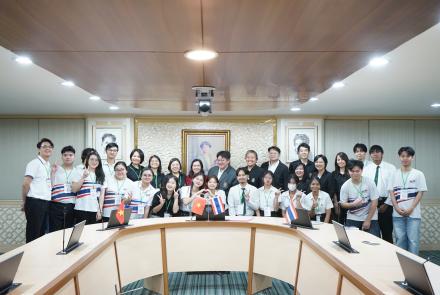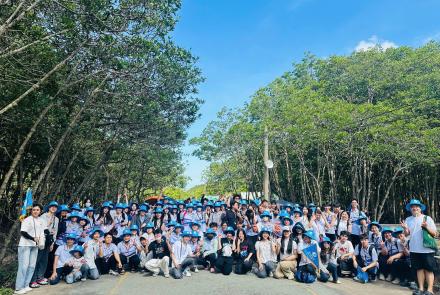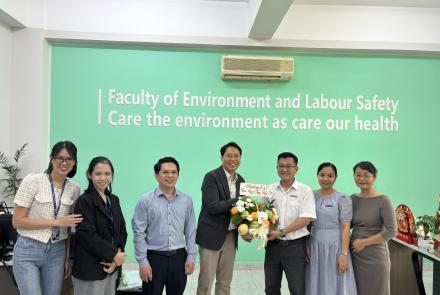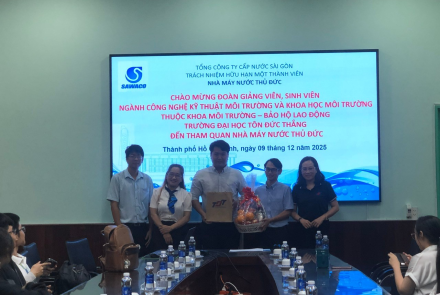Academic activity: "Introduction to Biological Membrane (Hollow Fiber) - Mitsubishi in Wastewater Treatment"
On April 17, 2024, the Faculty of Environment and Labour Safety invited representatives from Green Technology Environment JSC to present on the topic "Introduction to Biological Membrane (Hollow Fiber) - Mitsubishi in Wastewater Treatment" to provide students with updated knowledge and experience in Environmental Engineering, MBR (Membrane Bioreactor) technology in wastewater treatment, and the application of Mitsubishi hollow fiber biological membranes in MBR technology.
The presenters from Green Technology Environment JSC are Engineer Dong Trong Dat – Head of Design Department, and Engineer Huynh Quoc Thai.
The main content of the academic session focuses on the following topics: introduction to MBR membrane filtration technology in wastewater treatment, application of Mitsubishi hollow fiber membranes in MBR, installation and operation of MBR technology, comparison of MBR technology using Mitsubishi hollow fiber with other technologies currently applied in wastewater treatment.
Presentation content:
Introduction to MBR Biological Membrane:
- Membrane Bioreactor (MBR) Technology: Combines membrane processes like microfiltration (MF) or ultrafiltration (UF) with biological wastewater treatment processes, such as activated sludge.
- Current Use: Widely used for treating municipal and industrial wastewater.
- Materials: PVDF (Polyvinylidene Difluoride) membranes are most common due to their high lifespan and excellent chemical and mechanical resistance.
- Advantages over Traditional Technology: Superior water quality, operation with high MLSS (Mixed Liquor Suspended Solids), space-saving, ideal for wastewater reuse needs.
Technical Specifications of MBR Membranes:
- Structure: Details of MBR membrane frame construction.
- Maintenance: Guidelines for maintaining MBR systems.
- Industrial Applications: Use of MBR membranes in various industries.
Advantages of MBR Membranes:
- Stable and Superior Output Water Quality: Consistently better than traditional technologies.
- Space Efficiency: Requires less construction area.
- Operational Flexibility: Can be operated under low or high loads, with capacity increases possible through additional membrane modules.
- Reduced Sludge Discharge: Less sludge produced compared to traditional methods.
- Stable System Operation: Independent of sludge quality in the tank, no loss of microbial sludge, and fewer biological-related issues.
Images from the Academic Session:

Figure 1. Faculty members from the Faculty of Environment and Labour Safety, representatives from Green Technology Environment JSC including Engineer Dong Trong Dat – Head of Design Department, and Engineer Huynh Quoc Thai, along with students from the Faculty attended the session.

Figure 2. Ms. Ho Ngo Anh Dao - Head of the Faculty of Environment and Labour Safety, and Ms. Nguyen Thi Hien are presenting gifts from the Faculty to the guests.

Figure 3. The academic session with representatives from Green Technology Environment JSC concluded with a closing ceremony.
- Log in to post comments


